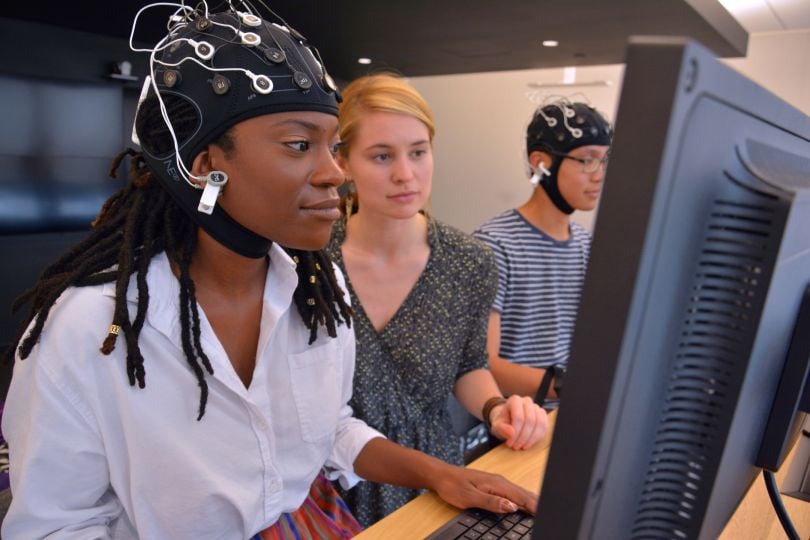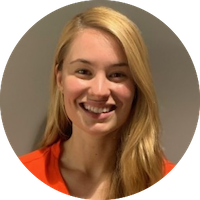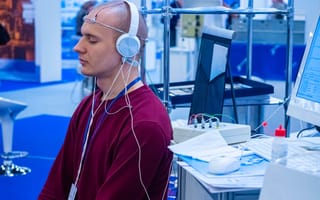If you see a close-up shot of hands in an advertisement and think, “Hey, this company really gets me,” you’re not alone. And it’s not that you’re obsessed with hands.
According to consumer neuroscience research conducted by Mindshare, a global media agency, close-ups of hands resonate with people on a subconscious level — but there is a limit to how close the camera can get.
“We found that using close-up shots of hands is an incredibly powerful way to connect with viewers, but this effect backfires when hand images are too closely cropped to the point where they no longer connect to a body,” said James Kelly, a data scientist and co-lead of the Mindshare NeuroLab. “We call this ‘the amputated limb effect.’”

The NeuroLab is Mindshare’s in-house consumer neuroscience research facility, located in the company’s New York office. Mindshare says it’s the first media agency to have an in-house neuro research lab.
Consumer neuroscience, also known as neuromarketing, seeks to augment traditional market research studies with physiological and neural data. The goal is to see if a person’s responses in a survey or focus group match up with the signals sent by their subconscious and body.
The Origins of Consumer Neuroscience
A long list of companies offer neuromarketing services to brands, ranging from established market research giants like Nielsen, which formed its consumer neuroscience division in 2011, to startups like New York-based Spark Neuro, which launched in 2017 and has raised $13.5 million in funding.
Companies like Hulu, Paramount and Universal work with Spark Neuro to learn where people zone out during movie trailers and what types of ads generate the most emotional engagement. The startup tracks brain and sweat-gland activity, along with facial expressions and eye movement, and says its algorithms can crunch more than 6,000 data points per second.
While Mindshare is a relative newcomer to consumer neuroscience — the NeuroLab opened in the summer of 2019 — the company said it’s seeing early returns from its work. Kelly and Arafel Buzan, a neuroscientist and the lab’s other co-lead, spoke with Built In about the equipment the lab uses, the insights they’ve uncovered and how the demand for consumer neuroscience is growing.

What technology does the NeuroLab use, and how exactly does brain and physiological data determine how a person feels about an ad?
Buzan: We aim to circumvent self-report bias and provide more accurate and lucid insights into how consumers engage with and think about brands. Electroencephalogram, or EEG caps, record second-by-second changes in electrical activity in various regions of the cortex. High-definition EEG data allows us to observe changes in emotional valence — which indicates how much someone likes or dislikes something — memory encoding, attention and cognitive load, while consumers engage with different media channels.
Biometrics, including galvanic skin response and heart-rate variability, are used to measure emotional intensity and arousal response elicited by specific features of a stimulus, such as an ad, a UX experience or packaging.
Kelly: We’re very excited about a few upcoming projects that will allow us to tap into additional neuro tools — specifically, eye tracking. The NeuroLab is in the process of partnering with Mindshare’s advanced analytics teams to link neuro data to other data streams, which could create more predictive models for sales projections.
How does the data gathered by your team make an impact on the ad campaigns Mindshare’s clients run?
Buzan: For one client, we measured eight audio ads, all in context and across multiple groups, to identify which words, voices, musical elements and emotions were driving attention and key brand emotions. Then, we created a neuro audio blueprint, which they are using to inform future creative. We’ve worked with a number of our clients to build neuro-audio blueprints to craft attention-grabbing audio creative and track the impact of audio on brand perceptions.
“In one study, we found that Gen Z responds neurologically the same to 15- and 30-second social media ads, whereas older generations respond better to longer ad spots.”
In addition to learning that people like ads featuring close-ups of hands, what other insights have NeuroLab researchers uncovered?
Kelly: In one study, we found that Gen Z responds neurologically the same to 15- and 30-second social media ads, whereas older generations respond better to longer ad spots. In a recent study, we quantified the brand value of reaching the LGBTQ+ community in authentic media environments, and why LGBTQ+ publications and content are crucial spaces for brands to support. In another study, we found that a client needed to change their contextual targeting strategy by seeking a different type of consumer emotion in media buys.

James, as a data scientist, does working with neurological data present a unique challenge for you and your team?
Kelly: Computational neuroscience is a rapidly emerging field that requires a bottom-up comprehension of both neuroscience and data science to surmount. To address this, the NeuroLab has a suite of proprietary tools for collecting, analyzing and visualizing neurological data, and we’re developing more. From an agency perspective, we’re excited by the opportunity to integrate our data even further with existing information. We believe that over the next five years, diversity will outstand quantity in the data hierarchy. We’re working on leveraging neurocognitive metrics to build upon data sourced from more traditional streams.
How do you think consumer neuroscience will evolve in the next five years?
Buzan: We expect brands to engage more heavily with scalable neuroscience solutions, such as implicit association testing, to more accurately understand the ability of their media and advertising to influence brand perceptions. By leaning into consumer neuroscience and understanding the consumer at the level of the subconscious, brands can create more impactful, relevant and authentic advertising with less overall spend waste.




